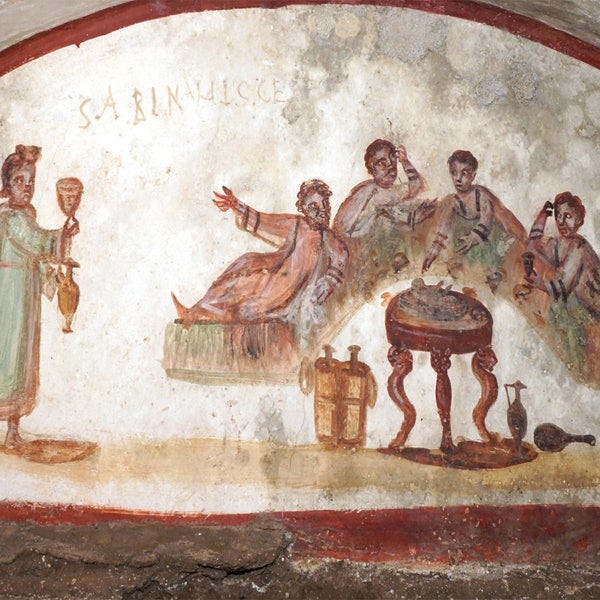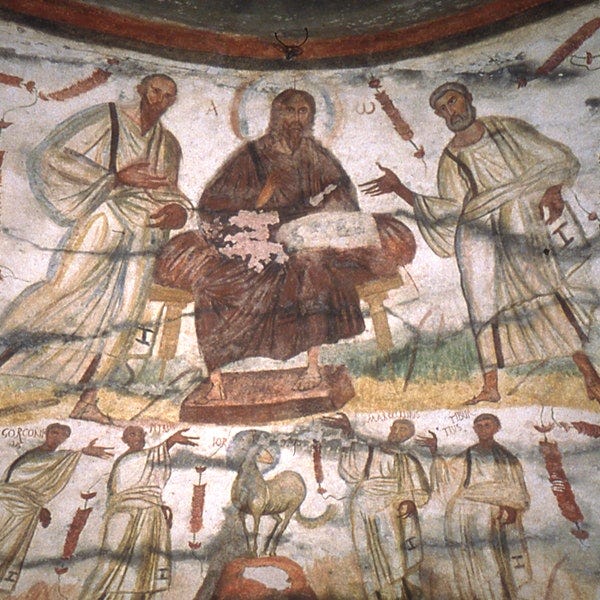
The Catacombs of San Callisto, located on the Appian Way in Rome, are among the most important and best-preserved examples of early Christian burial sites. These catacombs, used from the second to the fourth centuries CE, provide a rich historical and artistic record of Christian practices and beliefs during a time of significant religious transition in the Roman Empire. The frescoes within the catacombs are of particular importance, as they illustrate the development of Christian iconography and the interplay between Roman artistic traditions and emerging Christian theology.
The Catacombs of San Callisto are believed to have been established during the reign of Emperor Emperor Commodus (177-192 CE), and they served as an important burial site for Christian martyrs, popes, and members of the early Christian community. The catacombs themselves are vast, extending over several kilometers, and contain numerous burial niches, or loculi, that were carved into the soft tufa rock beneath Rome (Lowden, 1997). The catacombs were used for several centuries, with frescoes and other artworks adorning the burial chambers, serving both as expressions of faith and as symbols of hope for the early Christian community facing persecution.
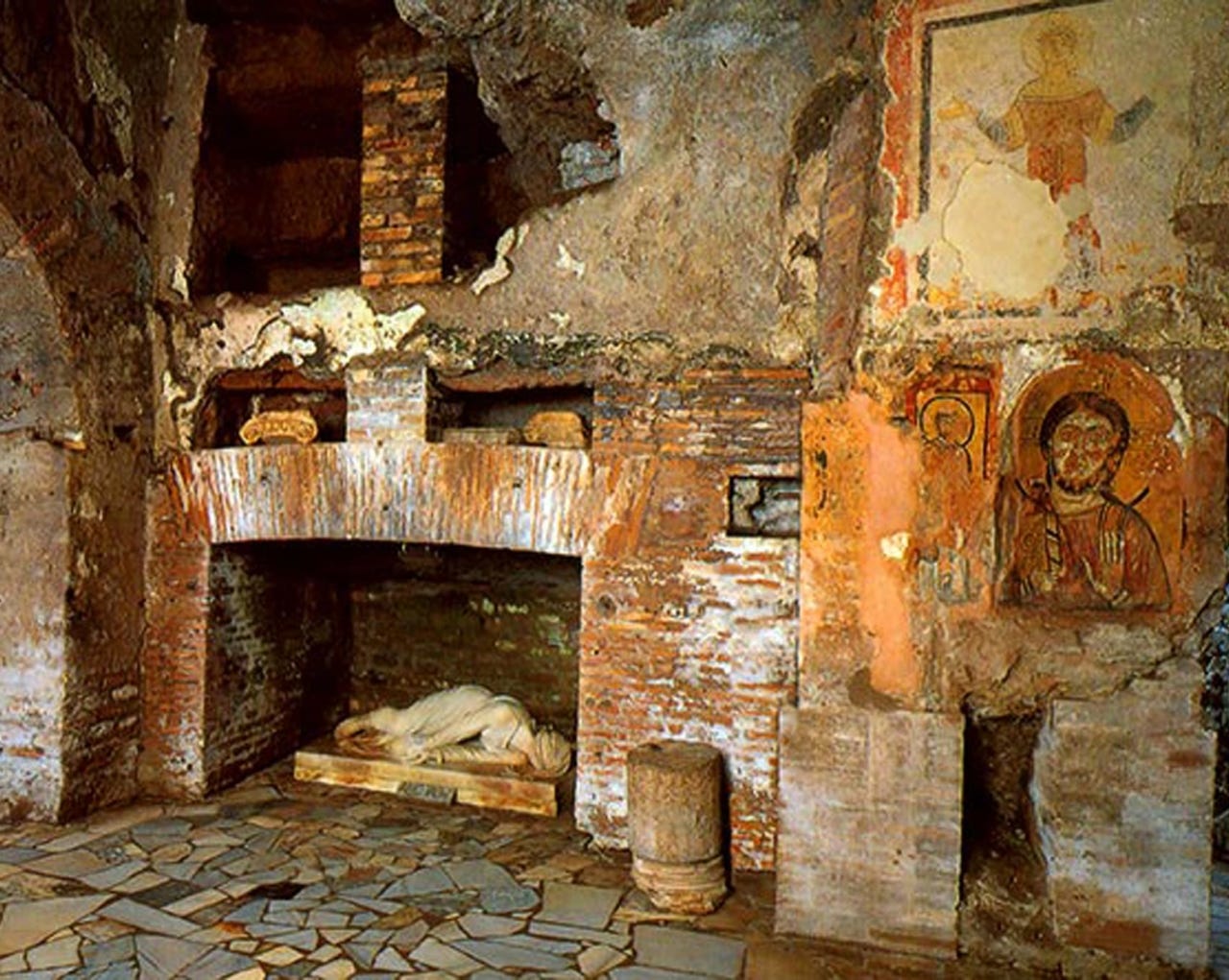
The frescoes of the Catacombs of San Callisto are significant for their role in illustrating the Christianization of Roman funerary art. During the early Christian period, Christianity was often illegal, and as a result, Christians had to conduct their rituals and burials in secret. The catacombs thus became both sacred spaces for the deceased and places of refuge for the living. The art within these catacombs, including the frescoes, reflects the theological ideas that were evolving within the Christian community, as well as the desire to distinguish Christian burials from the pagan traditions of the Roman Empire.
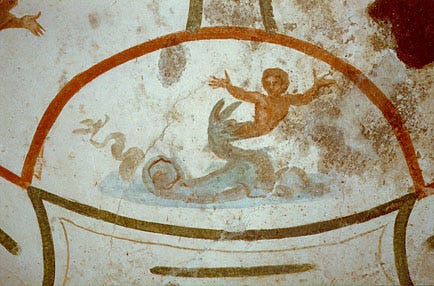
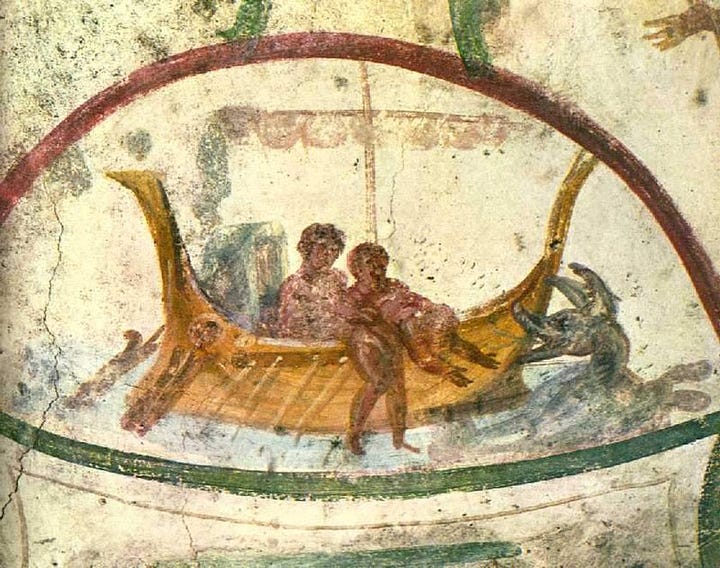
The frescoes in the Catacombs of San Callisto are notable for their symbolic use of imagery. Rather than depicting scenes from the life of Jesus Christ as later Christian art would, these early frescoes emphasize themes of salvation, the afterlife, and Christian teachings. Key images in the frescoes include depictions of the Good Shepherd, Jonah and the whale, the three youths in the furnace (from the Book of Daniel), and various biblical scenes of resurrection (Stevenson, 1985). These motifs not only reflect the Christian belief in the resurrection of the body but also serve as metaphors for the protection and salvation of the soul.
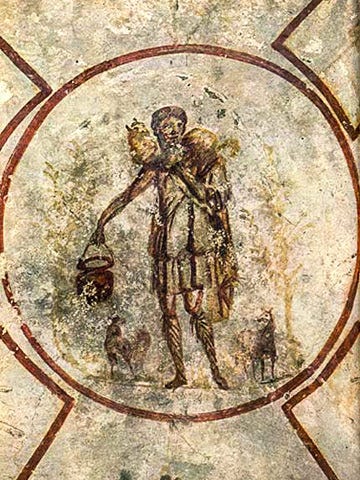
One of the most significant frescoes in the Catacombs of San Callisto is the depiction of the Good Shepherd, a motif that was common in early Christian art. In these frescoes, Christ is often portrayed as a youthful, beardless figure carrying a lamb on His shoulders. This image, which draws on both Greco-Roman artistic conventions and Christian symbolism, serves as a representation of Christ as a protector of His followers, guiding them to eternal life (White, 2001).
The frescoes also frequently depict scenes from the Old Testament, such as Jonah and the whale. This story, with its themes of death and rebirth, was an important prefiguration of Christ's death and resurrection. Early Christians saw in these biblical stories parallels to their own experiences of death and resurrection, especially in the context of martyrdom (Toynbee, 1996). Similarly, the frescoes of the three youths in the furnace symbolize God's protection of the faithful in the face of persecution, a clear reference to the trials faced by early Christians under Roman rule.

Although the frescoes of the Catacombs of San Callisto are distinctly Christian in their theological themes, they also reflect Roman artistic conventions. Early Christian artists, many of whom were likely trained in pagan artistic traditions, used established Roman iconography and stylistic elements in their work. For example, the depiction of the Good Shepherd is based on similar representations of youthful gods in Greco-Roman art, such as depictions of Apollo and Hermes. The use of these classical motifs was not meant to be pagan in nature but served as a way for early Christian artists to communicate Christian themes to a broader Roman audience (Stead, 1996).
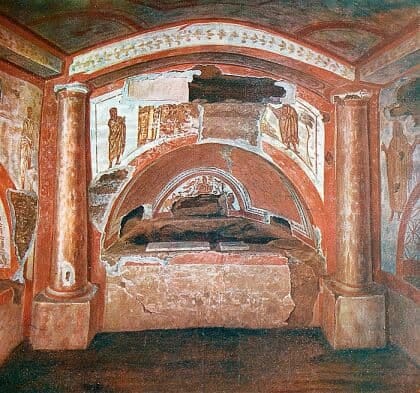
Additionally, early Christian frescoes often borrowed from Roman portraiture, particularly in the depiction of the deceased. The early Christians did not reject the Roman funerary tradition but instead adapted it to their own purposes. The frescoes in the Catacombs of San Callisto, for example, sometimes include portraits of the deceased, rendered in the style of Roman portraiture, but with subtle changes that emphasize the Christian hope for resurrection rather than the Roman belief in an afterlife (Della Portella and Smith, 2000). The adaptation of these Roman styles allowed early Christians to express their identity in ways that were both culturally familiar and distinct from their pagan counterparts.
The frescoes in the Catacombs of San Callisto played an important role in reinforcing Christian identity and community during a time of persecution. The catacombs themselves were not just burial sites but also places for prayer, worship, and the commemoration of the dead. The frescoes, with their depictions of salvation and the resurrection, served as visual reminders of the core tenets of the Christian faith (Rutgers, 2019). They provided a sense of continuity and hope for Christians who faced oppression and martyrdom for their beliefs.
As spaces of Christian burial, the catacombs were also a way for early Christians to establish their own identity separate from the Roman state religion. The iconography in the frescoes was a subtle but powerful assertion of Christian beliefs and values, particularly the idea that death was not the end but a transition to eternal life. By using images from Scripture, early Christians not only communicated theological messages but also created a visual language that distinguished them from pagan Romans (White, 2001).
The frescoes of the Catacombs of San Callisto are invaluable examples of early Christian art, offering insight into the religious, social, and artistic practices of the time. Through their use of Christian iconography and Roman artistic conventions, these frescoes tell the story of a community struggling to assert its identity in a hostile world. The themes of resurrection, salvation, and protection in the frescoes not only reflect the core beliefs of early Christianity but also provide a window into the lives of the Christians who created them. As such, the frescoes of the Catacombs of San Callisto remain a powerful symbol of faith and hope, both in the past and for modern viewers.
References:
Della Portella, Ivana, and Mark E. Smith. Subterranean Rome: Catacombs, Baths, Temples, Streets. Konemann, 2000.
Lowden, John. Early Christian and Byzantine Art. Phaidon Press, 1997.
Rutgers, Leonard V. The Early Christian World: An Introduction. Routledge, 2019.
Stead, Christopher. Art and Architecture in the Early Christian World. HarperCollins, 1996.
Stevenson, James. The Catacombs: Life and Death in Early Christianity. Thomas Nelson, 1985.
Toynbee, Jocelyn. Death and Burial in the Roman World. Johns Hopkins University Press, 1996.
White, L. Michael. In the Catacombs: From Jesus to Christ – The First Christians. PBS, 2001.




